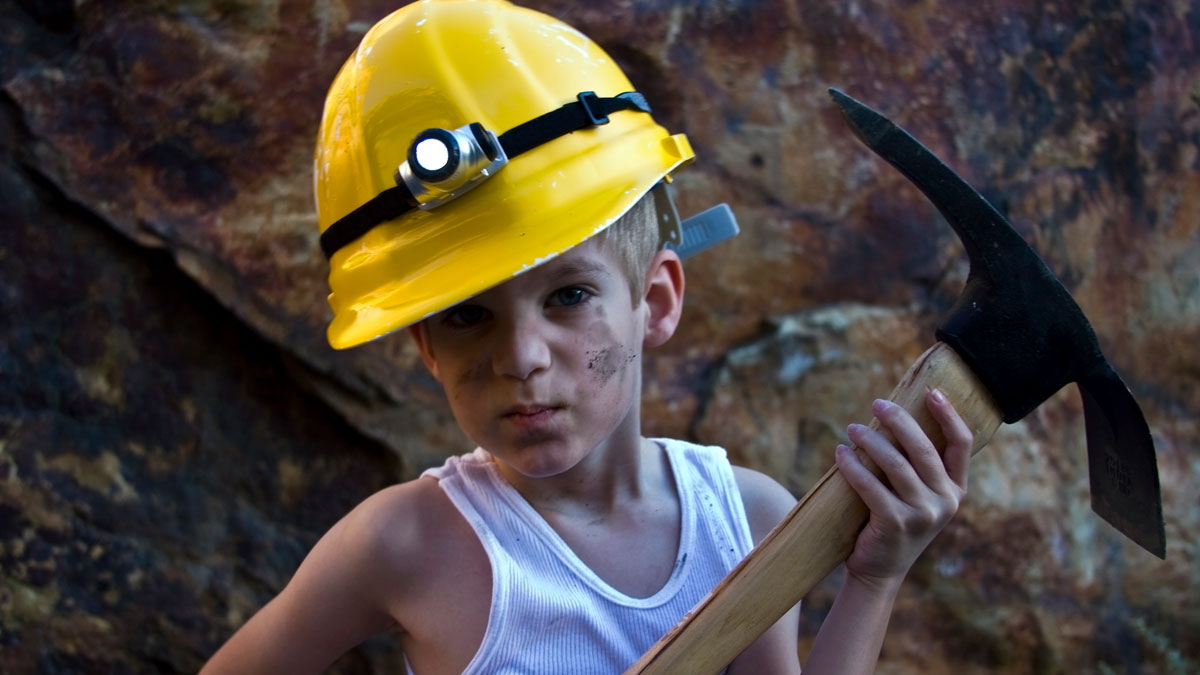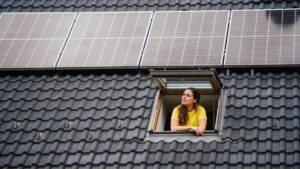‘Big Boy Territory’: These junior explorers are cheap as chips and already have major market players on board

Picture: Getty Images
We’re sitting at an inflection point in the shift from fossil fuels to new green energy technologies, with the International Energy Agency saying of the US$2.8 trillion to be invested in energy this year, US$1.7t will be directed to technologies like wind, solar, nuclear and EVs.
Making all of that possible is commodities like lithium, vanadium, zinc, nickel, graphite and cobalt, the raw materials underpinning the technology the world is putting it’s hat on to counter the impacts of global warming.
Since 2017 the market for these commodities has doubled to US$320 billion, while investments in that suite of commodities lifted 30% in 2022 on the back of support from governments, carmakers, battery producers and traders.
Indeed direct investments, offtake and debt funding from larger companies has become a more and more common sight in junior miners on the vanguard of the discovery and development of the new energy metals suite.
A co-sign from a big name resources investor often means that player has sussed something the broader market is yet to comprehend.
Take the example of the explorer regarded, far and away, as this year’s market champion. Nickel explorer Azure Minerals (ASX:AZS) raised plenty of eyebrows when it brought Chile’s Sociedad Quimica y Minera de Chile on board as its top shareholder in a $20 million placement earlier this year.
Turned out SQM had a good nose for what would be a major spodumene discovery at its Andover project in the Pilbara.
Up almost 800% this year, Azure is no longer a micro-cap. It’s now a $750 million market capped company.
That shows just how big the gap between a well-informed major’s assessment and the general market can be when it comes to juniors looking for commodities to fuel the energy transition.
Many of the same opportunities were on display at the Noosa Mining Investor Conference last week. We headed down to the Market Insights event hosted by Jane Morgan Management and Resolve IR, where a host of potentially undervalued small caps already on the radar of industry giants showed their wares.
Lithium Plus Minerals (ASX:LPM)
Market Cap: $20 million
,
Lithium Plus Minerals controls in the vicinity of 1690km2 along the Litchfield Pegmatite Belt, surrounding the Finniss lithium mine in the Northern Territory, the newest spodumene producer in Australia.
Its $2 billion capped neighbour Core Lithium (ASX:CXO) recently began exporting through the Port of Darwin, in an operation which will soon produce more than 100,000t of the lithium raw material a year.
“The tenements we have surround that mine on three sides,” non-executive director Simon Kidston told the room at Locale in Noosa on the Sunshine Coast.
Already with its finger on the pulse is China’s CATL, the world’s largest battery producer for EVs .
“Our second largest shareholder is the biggest battery manufacturer in the world, the Chinese group called CATL is a 9% holder,” Kidston said.
“We’re delighted to have them on the share register because they provide a very strong route to commercialisation of the products we make.
“I think they control some 32% of the market and they’re very, very hungry for lithium.
“So no doubt we’ll have discussions with them about offtake and how we can secure funding from them to bring these mines into production.”
Kidston said LPM was sitting on $9 million of cash, plenty to fund a drilling at projects including its Bynoe asset around where Core has defined 10 deposits bearing ~30Mt of lithium rich pegmatite ore in the past five years.
“We announced some significant news in relation to the discovery we made at Lei. That’s some three kilometers from the operating Core mine,” he said.
“What we’ve announced is that every hole we’ve filled this year has intersected juicy intercepts of mineralised pegmatite. And what I’m talking is sort of 40 to 50 metres in terms of widths and grades from 1.4-1.5% as high as 2% lithium.
“In the lithium business 1.4-1.5% or above are exceptional grades. So I think we’re moving now from the exploration phase at Lei to infill drilling, with the objective of defining a maiden JORC resource deposit before the end of this calendar year.”
Critical Minerals Group (ASX:CMG)
Market Cap: $7 million
,
Critical Minerals Group was the first green energy investment in Oz from Idemitsu Kosan, the Japanese energy house and trader which has long counted coal as its major interest in Australian resources.
Like Idemitsu, which announced the sale of its share in the Ensham coal miner earlier this year, its new boss Scott Winter has come from that same world, having once been the CEO and MD of MACH Energy, along with stints at Thiess, BHP, and Mount Isa Mines, and as COO at Mineral Resources (ASX:MIN), CEO of surface mining at Perenti (ASX:PRN) and interim CEO at manganese miner Jupiter Mines (ASX:JMS).
With 32% of the company’s post-IPO capital, Idemitsu was the largest backer of its 2022 float.
The dream is to develop the Lindfield project alongside a vanadium processing facility in the emerging battery metals hub of Townsville in northern Queensland, plugging into a battery vanadium market forecast to grow at an average compound rate of 41%pa from 2022-2031.
Found near Julia Creek, Lindfield contains 363Mt at 0.43% V2O5 and 4.8% Al2O3, inclusion indicated resources of 254Mt at 0.44% V2O5, from which CMG plans to sell both vanadium and high purity alumina.
At a market cap of ~$8m, Winter quips, the company is worth around the price of a Noosa unit, he’s hoping to make equivalent to part of a suburb in the sunny holiday hotspot over time.
“Critical Minerals Group have a vanadium deposit sitting up in the Julia Creek area, along with another bunch of companies up there all forging ahead really trying to put there projects through the exploration phase into the development phase,” Winter said.
“We’re not far off pushing our scoping study to completion, hopefully successfully, that’ll be completed soon and obviously the next phase will be into the PFS, DFS and doing some pilot studies on the downstream processing up there.”
Caspin Resources (ASX:CPN)
Market Cap: $22 million
,
It doesn’t hurt to have one of the ASX’s biggest success stories of the past five years in your corner. Especially when you’re looking for something just like the world class discovery they made.
A spin-out from the sale of Cassini Resources and its West Musgrave nickel and copper project to OZ Minerals — subsequently purchased by BHP for a tidy $9.6 billion — Caspin owns the Yarawindah Brook project in the West Yilgarn region of WA and counts Chalice Mining (ASX:CHN) as its largest shareholder at 8.7%.
Tim Goyder-backed Chalice of course made the famous Julimar nickel, copper and PGE discovery around 70km north of Perth.
But CEO Greg Miles is just as excited about the Mt Squires project, one of a handful is the West Musgrave region where BHP will develop one of Australia’s largest nickel and copper mines.
He says the decision to focus at home in WA is a big benefit for the explorer.
“I commend the courage of some of those companies to go around the world, and explore and develop mines in foreign jurisdictions,” he said.
“I personally using a football analogy, always like to play on my home ground.”
The Yarawindah Brook project has drawn plenty of investors into the Caspin story.
“We’re still uncovering the potential of that region,” Miles said.
“Just last week, we put out an announcement that we’ve uncovered a new soil anomaly in an area that’s never been explored for platnium group elements, nickel and copper. It’s an hour’s drive from my doorstep to the project area it is so close to Perth.
“Who would have thought that you could discover essentially a new frontier, so close to a metropolitan area.”
But with winter exploration focused on Mt Squires, he said the development of BHP’s West Musgrave mine would be transformative for that West Australian frontier as well.
“I once did a presentation with another CEO from another mining company and he goes geez, West Musgrave that’s remote. The odd thing was he was trying to develop a mine in Cameroon in Central Africa, and he’s telling me that my project was remote, true story,” he said.
“But it’s a fantastic part of the world that is becoming less remote by the day because BHP is spending $1.7 billion to build Australia’s newest nickel and copper mine. So it’s going to be a transformational mine for that … region. We’re in a premier location right alongside that project.
“We’ve drilled a whole suite of new nickel-copper soil anomalies have a very similar signature … we’ve also tested some really interesting gold targets which is fantastic position. We’ve got multi-commodity targets within the one project.”
Narryer Metals (ASX:NYM)
Market cap: $5 million
,
Narryer Metals does not have a major investment from a large cap miner or OEM.
But it is well-placed to draw interest after this month acquiring five projects in the hotter than hot James Bay and Northwest Ontario regions of Canada, where Australian companies have been energised in their search for lithium for electric vehicles.
“The projects in James Bay, we have a market cap of about $7m but the other companies around us have market caps of $52 billion,” Narryer MD Gavin England says.
“So we’re in big boy territory and we think we can do the job.”
The ground at James Bay is a step up from mere nearology. Located in a district where Rio Tinto has been inking farm-in deals with juniors to explore for spodumene, Narryer already has some on its recently acquired ground.
“We have three projects in the James Bay area that have all been strategically picked because they’ve got pegmatites and some of those pegmatites have already been identified as having spodumene,” he said.
Also boating a carbonatite rare earth project at Rocky Valley in WA’s south and a Julimar style nickel-copper-PGE prospect near Ceduna in South Australia’s Gawler Craton, England thinks Canada offers a lower entry point for junior explorers entering the lithium game after the boom.
“We think the lithium space as a junior explorer is difficult in Western Australia, mainly because a lot of good ground is taken up,” he said.
“Exploration has really only occurred over the last few years and the James Bay area, which is almost the size of the Yilgarn itself, is looking like a major play and a Tier 1 place to do exploration for lithium.”
The ground in Ontario is also showing immense promise.
“Northwest Ontario has over 100 million tonnes of resource already,” England noted.
“One of the companies on the ASX that you might have heard of is Green Technology Metals (ASX:GT1), they’ve got some quite good resources and we have ground along the same Greenstone belt.”
Queensland Pacific Metals (ASX:QPM)
Market Cap: $185 million
,
The largest company on our list by market cap, Queensland Pacific Metals is the proud owner of the TECH project, a two stage battery metals project that once fully operational will produce 32,800t of nickel in sulphate, 3580t of cobalt in sulphate, 1.245Mt of hematite iron ore and 4000t of high purity alumina a year over a three decade mine life.
It has some of the world’s biggest OEMs on board, all of whom are looking to the project as a key source of supply for metals needed to fulfil their electric vehicle and battery production commitments.
“Most battery metal companies end up having one major strategic partner. Well, we’ve got three on our register, we’ve got General Motors, LG Energy Solutions, and POSCO,” general manager of corporate development John Khoo said.
“LG and POSCO did an offtake investment transaction with us which resulted in a $20 million investment. and about eight months ago, General Motors came on board with a $100 million dollar equity investment and life of project offtake.
“To put it into perspective, we were the very first nickel investment for both LG energy solutions and General Motors and I can let you know that they’ve obviously run the ruler on many nickel projects around the world. So we were very, very pleased that we were first cab off the rank.”
QPM also has huge support for debt finance for the TECH project, with up to $1.5 billion of conditional debt secured from bodies including the Northern Australia Infrastructure Facility, Export Finance Australia and Export Development Canada, while the Queensland Government has also thrown its weight behind the proposed processing facility.
“We are a project of State Significance, but we are also the first company in Queensland to be awarded what’s called significant investment project status and just last week we were all in Korea with Premier Annastacia Palaszczuk and the resources minister and all their staff having a critical meeting with our three partners,” Khoo noted.
QPM plans to support the cost structure of the TECH project with its own gas supply from the recently acquired producing Moranbah project, coal mine waste gas project with 240PJ of reserves which is forecast to generate earnings rising to $14.6m by the December quarter of 2024.
“The next six months is where we bring it all home together and we make the Tech Project a reality and integrate the gas project,” Khoo said.
SUBSCRIBE
Get the latest breaking news and stocks straight to your inbox.
It's free. Unsubscribe whenever you want.
By proceeding, you confirm you understand that we handle personal information in accordance with our Privacy Policy.








